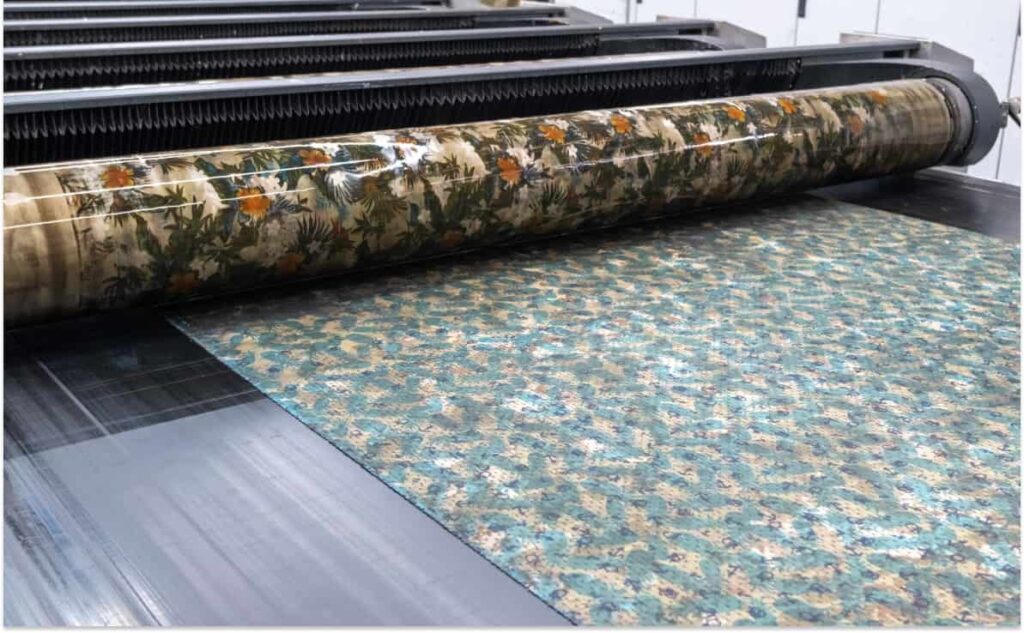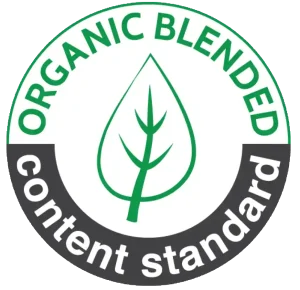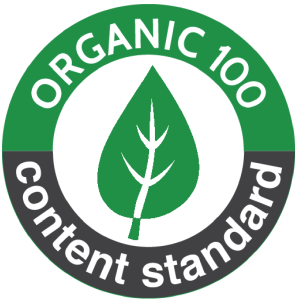Digital Textile Printing has revolutionized the textile industry with its ability to reproduce complex patterns, enable rapid production, and minimize waste. For natural and regenerated Cellulose fibers (like Cotton, Viscose, Modal, Tencel) and Protein fibers (Silk), Reactive Ink is the essential colorant.
Reactive Ink does not simply adhere to the fiber; it forms a stable Covalent Bond between the dye molecule and the fiber molecule. This bond provides exceptional color fastness against washing, light, and rubbing.
However, each type of Cellulose/Protein fiber has distinct structural characteristics (e.g., the crystallinity of Cotton, the softness of Silk, the high swelling capacity of Viscose), requiring printing engineers to select the appropriate Reactive Ink group with the correct Reactive Group (RG) to maximize Fixation Efficiency.
This article provides a comprehensive overview, from chemical mechanism to practical application, helping you select the optimal Reactive Ink for each fabric type.

1. Fundamental Chemical Mechanism of Reactive Inks
Nội dung tóm tắt
ToggleUnderstanding the reaction mechanism is key to controlling print quality.
1.1. Nature of Reactive Inks
Reactive Inks are water-soluble anionic dyes, distinguished by the presence of a Reactive Group (RG) – an Electrophilic group in their structure.
1.2. Color Fixation Reaction (Covalent Bonding)
The color fixation reaction is a chemical reaction between the dye’s Reactive Group and the functional groups active on the fiber:
- Cellulose Fibers (Cotton, Viscose, Tencel): The active site is the Hydroxyl Group (-OH). The reaction can be described verbally: The Dye’s Reactive Group (Dye-RG) reacts with the Hydroxyl Group on the Fiber (Fiber-OH), under the effect of Alkali and Heat (Steaming), to create a stable Covalent Bond (Dye-O-Fiber).
The reaction occurs in an Alkali medium and at high temperature (Steaming). The Hydroxyl Ion (OH-) from the alkali activates the -OH group on the fiber into the Fiber-O- ion, which then attacks the Reactive Group of the ink (Nucleophilic Substitution or Nucleophilic Addition reaction). - Protein Fibers (Silk, Wool): The active sites are the Amino Group (-NH2) or Carboxyl Group (-COOH). Similarly, the reaction with the Amino Group on the Fiber (Fiber-NH2) creates a Covalent Bond (Dye-NH-Fiber) under Alkali and Heat conditions.
1.3. Hydrolysis – The Number One Enemy
In parallel with the color fixation reaction with the fiber, Reactive Ink also reacts with water (Hydrolysis), creating Hydrolyzed Dye (unreactive dye). This process occurs when the dye’s Reactive Group attacks a water molecule (H2O) instead of the fiber’s functional group. The hydrolysis reaction is represented as: Dye-RG reacts with H2O in the presence of Alkali and Heat to yield Dye-OH (Hydrolyzed Dye) and HX. Note that Dye-OH (Hydrolyzed Dye) is not fixed to the fiber.
Hydrolyzed Dye does not form a covalent bond with the fiber and must be completely washed off. If not, it will cause Staining defects and reduce wash fastness. The fixation efficiency of the ink is calculated as the ratio of dye fixed to the fiber versus the total amount of dye printed.
2. Classification of Reactive Inks by Reactive Groups
Reactive Inks are classified based on the chemical structure of the Reactive Group, which determines their reactivity, fixation temperature, and susceptibility to hydrolysis.
2.1. Monofunctional Reactive Groups (Mono-Reactive)
- Characteristic: Contains only one Reactive Group per dye molecule.
- Monochlorotriazine (MCT): Requires high fixation temperature (102-105C). Suitable for traditional Steaming processes.
- Vinyl Sulfone (VS): Highly reactive, can fix at lower temperatures (95-102C). More sensitive to pH control.
2.2. Bifunctional Reactive Groups (Bi-Reactive)
- Characteristic: Contains two different Reactive Groups on the same dye molecule (most commonly MCT and VS).
- Advantages:
- Higher Fixation: Ability to form two bonds with the fiber, or one bond with the fiber and one bond with water at a low hydrolysis rate, significantly increasing the Fixation Efficiency (Color Yield).
- Reduced Hydrolysis: Decreases the amount of hydrolyzed dye, making the Washing Off process easier, saving water and time.
- Wide Spectrum: Allows printing on various fiber types with more flexible fixation conditions.
- Suitability: Bifunctional Reactive Ink is the standard choice for most modern Cellulose fabrics, especially when printing deep colors (Deep Black, Navy Blue).
3. Selecting Reactive Ink by Specific Fiber Type
The porosity, crystallinity, and chemical composition of each fiber type determine the speed and efficiency of the Reactive Ink reaction.
3.1. Cotton
- Characteristic: Pure Cellulose fiber, medium crystallinity, stable swelling capacity.
- Challenge: Requires high fixation efficiency to achieve deep colors and reduce the amount of dye that needs to be washed off.
- Optimal Choice: Bifunctional Reactive Ink (MCT/VS).
- Reason: Provides the highest fixation efficiency (>85% under optimal conditions), minimizing washing off costs and the risk of color staining during the finishing process.
3.2. Viscose (Rayon) and Modal
- Characteristic: Regenerated Cellulose fibers, with very high porosity and Swelling capacity, lower crystallinity than Cotton.
- Challenge: High swelling increases the reaction speed (Highly Reactive), but simultaneously reduces the fiber’s Wet Strength. Viscose fabric is easily damaged or deformed when wet and aggressively treated.
- Optimal Choice: Vinyl Sulfone (VS) or Bifunctional Ink.
- Reason: VS reacts well at lower temperatures, reducing Steaming time and avoiding overly harsh thermal treatment when the fabric is wet. Moisture content must be carefully controlled before Steaming to prevent Bleeding (ink running).
3.3. Tencel (Lyocell)
- Characteristic: High-grade regenerated Cellulose fiber, with a very smooth surface and unique Microfibril structure. Absorbs quickly and very uniformly.
- Challenge: Due to the smooth surface, Reactive Ink can easily diffuse laterally if the pre-treatment chemical load is too high, causing blurring or a “Halo Effect” around printed details.
- Optimal Choice: Bifunctional Reactive Ink (to ensure good color fixation).
- Reason: Requires a more concentrated Pre-treatment chemical formula (low K/S – Alkali concentration/Thickener) and precise ink amount control to achieve sharp printed lines on the smooth Tencel fiber surface.
3.4. Silk (Lụa)
- Characteristic: Protein fiber, with Amino Groups (-NH2) that react strongly with Reactive Ink. Silk is highly sensitive to strong alkaline environments and high temperatures.
- Challenge: Maintaining the natural Luster and softness of the fiber. Strong alkali can damage the silk protein.
- Optimal Choice: Vinyl Sulfone (VS) Reactive Ink.
- Reason: VS can fix color efficiently under milder alkaline conditions (such as Sodium Bicarbonate – NaHCO3) or Sodium Carbonate (Na2CO3) combined with a lower Steaming temperature (usually 95-100C). This protects the Protein structure of the Silk, preserving its luster and mechanical strength.
3.5. Linen (Vải Lanh)
- Characteristic: Cellulose fiber with high porosity, a coarser fiber structure than Cotton, and rapid absorption.
- Challenge: High reaction speed requires control to ensure the color penetrates deeply and uniformly into the coarse fiber structure.
- Optimal Choice: Bifunctional Reactive Ink.
- Reason: Ensures deep and stable color fixation on the Linen fiber structure, allowing the color to withstand the harsher washing off and softening processes.
4. Standard Industrial Digital Printing Process for Reactive Inks
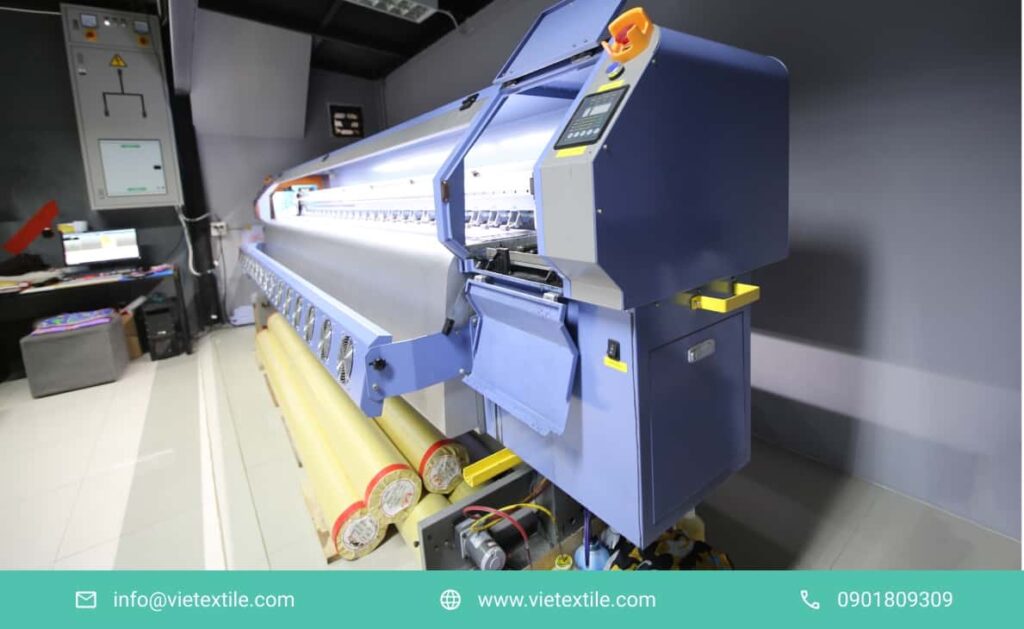
The performance of Reactive Ink is 60% dependent on the printing process.
4.1. Step 1: Pre-treatment
The fabric must be coated with a chemical layer called Printing Paste or Padding Solution. This chemical contains:
- Alkali Source: Typically Sodium Carbonate (Na2CO3) or Sodium Bicarbonate (NaHCO3), to create the necessary pH environment for the color fixation reaction.
- Humectant: Typically Urea or Glycol, to retain moisture in the ink and fiber after printing, allowing the dye to migrate and diffuse better.
- Thickener: Typically Sodium Alginate, to prevent ink bleeding.
4.2. Step 2: Printing
Direct printing using a digital inkjet printer (such as Kyocera, Konica Minolta). Reactive Ink is precisely sprayed onto the fabric according to the design.
4.3. Step 3: Drying
The fabric is dried gently at 60-80C.
- Note: Over-drying can cause alkali crystals to aggregate, hindering the subsequent Steaming reaction. The fabric should retain about 8-10% moisture in preparation for fixation.
4.4. Step 4: Color Fixation (Steaming)
This step activates the chemical reaction. The fabric is fed into a Steamer (steam chamber).
- Standard Conditions: Saturated Steam at 102-105C for 8-15 minutes.
- Role: Steam provides the necessary heat energy and moisture, activating the alkali (Na2CO3) and Urea, allowing the Reactive Group of the ink to form a covalent bond with the fiber’s active functional groups.
4.5. Step 5: Final Washing Off
This is the most critical step against color staining defects.
- Cold Rinse: Preliminary rinse to remove thickener and residual alkali.
- Hot Wash (Soaping): Washing with hot water (80-95C) and a specialized Washing Agent/Soaping Agent to thoroughly remove unfixed Hydrolyzed Dye.
- Final Cold Rinse: Rinsing the washing agent and softening the fabric.
5. Common Technical Faults and Solutions
Despite high efficiency, Reactive Inks still pose several risks if the process is not controlled.
| Common Fault | Primary Cause | Technical Solution |
| Fading After Washing | Low Fixation Efficiency due to insufficient Steaming time/temperature, or using Monofunctional ink for deep colors. | Increase Steaming time/temperature. Switch to Bifunctional Reactive Ink. Check alkali concentration in the padding solution. |
| Color Staining/Dirty Background | Incomplete Washing Off (Poor Washing Off). Hydrolyzed Dye is not removed and adheres to the fabric background. | Increase temperature and time for hot wash (Soaping). Use specialized Washing Agents capable of sequestering hydrolyzed dye. |
| Ink Bleeding | Excessive moisture content after printing, or the Thickener (Alginate) has inappropriate viscosity. Common on Viscose/Modal. | Reduce the amount of Urea and humectant in the paste formula. Adjust the viscosity of the thickener. Optimize drying before Steaming. |
| Color Paler Than Sample | Insufficient alkali ratio to activate the reaction, or poor ink quality. | Check the pH of the fabric after padding. Ensure the use of reputable supplier inks with stable Color Index (C.I.). |
6. Sustainability in Digital Reactive Ink Printing
Digital Reactive Ink printing offers significant sustainability advantages over traditional rotary screen printing.
- Reduced Water Consumption: Digital printing uses up to 50% less water than rotary printing by significantly reducing dye and chemical waste that requires washing. The use of Bifunctional Reactive Ink specifically reduces the amount of hydrolyzed dye that needs rinsing.
- Reduced Ink Waste: Digital printers spray only the ink necessary for the pattern, minimizing ink waste compared to mixing batches of color for rotary printing.
- Eco-Certifications: Leading Reactive Ink manufacturers provide products that comply with strict environmental standards like Bluesign and OEKO-TEX Standard 100, ensuring the inks are free of heavy metals and prohibited aromatic amines.
7. Frequently Asked Questions (FAQ) About Reactive Inks
1. Question: Can Reactive Ink be printed on Polyester fabric? Answer: No. Reactive Ink is designed to form a covalent bond with the Hydroxyl Group (-OH) of Cellulose fibers and the Amino Group (-NH2) of Protein fibers. Polyester (a hydrophobic polymer) lacks these functional groups. Disperse Ink is required to print on Polyester.
2. Question: What is the hydrolysis reaction of Reactive Ink? Answer: Hydrolysis is the reaction of the Reactive Ink with water instead of the fiber. This reaction creates dye that is no longer capable of fixation (Hydrolyzed Dye). Hydrolyzed Dye must be completely washed off to prevent staining the fabric background and reducing wash fastness.
3. Question: What is the role of Urea in the pre-treatment paste formula? Answer: Urea (a humectant) has a dual role: Moisture Retention (prevents ink from drying too quickly after printing) and Diffusion Support (helps the Reactive Ink dissolve and move deep into the fiber structure during Steaming, improving color uniformity and fixation efficiency).
4. Question: Why is Bifunctional Reactive Ink preferred over Monofunctional? Answer: Bifunctional Reactive Ink contains two Reactive Groups, which significantly increases the Fixation Efficiency (Color Yield) compared to Monofunctional. This means less dye is hydrolyzed, leading to easier Washing Off, saving cost and water.
5. Question: When printing Silk, why prefer Vinyl Sulfone (VS) over Monochlorotriazine (MCT) Reactive Ink? Answer: Silk is a Protein fiber sensitive to alkali and temperature. The VS Reactive Group is more effective in a milder alkaline environment (such as Sodium Bicarbonate – NaHCO3) and lower Steaming temperature (usually 95-100C), which helps protect the luster and structure of the Silk fiber, whereas MCT requires a stronger alkali for optimal reaction.
6. Question: What is the function of Steaming in the Reactive Ink printing process? Answer: Steaming is the color fixation step. Saturated steam provides high heat energy and moisture, the necessary conditions to activate the alkali and humectant, thereby promoting the chemical reaction between the Reactive Ink and the active functional groups on the fiber (Hydroxyl, Amino), creating a stable covalent bond.
7. Question: How to prevent Staining defects after Reactive Ink printing? Answer: Staining is usually caused by residual hydrolyzed dye. The solution is to perform a Hot Wash (Soaping) using water at 80-95C with a specialized Soaping Agent. This process helps dissolve and completely remove unfixed dye.
8. Question: Which Thickener is most commonly used with Reactive Ink? Answer: Sodium Alginate is the most commonly used thickener. It is a natural polymer, easily removed during washing off, and does not react with Reactive Ink under alkaline conditions.
8. FINAL CONCLUSION AND TECHNICAL ADVICE
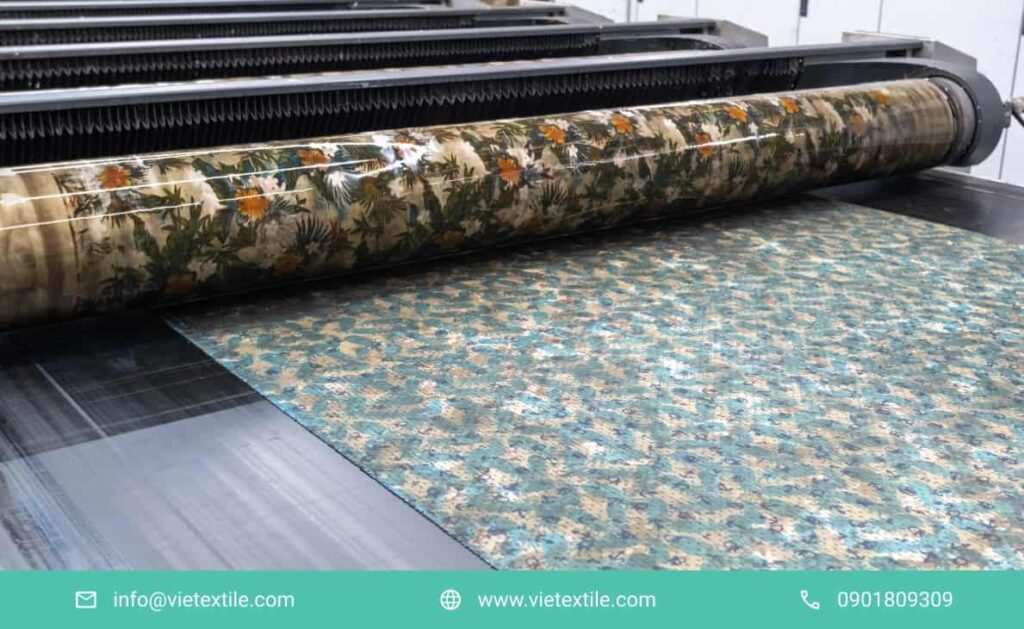
Selecting the appropriate Reactive Ink is an art combining chemistry, printing technique, and fiber characteristics. There is no single best ink for all fabrics.
Core Technical Advice:
- Prioritize Bifunctional: For Cotton, Linen, and Tencel, always prioritize Bifunctional Reactive Ink to achieve the highest Color Yield and reduce wastewater treatment costs.
- Control Silk: When printing Silk, prioritize the Vinyl Sulfone (VS) group and strictly control the pH (mild alkali) and Steaming temperature to protect the luster and Protein structure.
- Thorough Washing Off: Always invest in an effective Hot Washing Off (Soaping) process to completely remove hydrolyzed dye. This is the only way to ensure high wash fastness and prevent staining.
By mastering the reaction properties of each Reactive Ink group and adjusting the process to suit each fiber type (Cotton, Viscose, Modal, Tencel, Silk), you will optimize print quality, increase color longevity, and achieve high reproducibility in production.
VieTextile provides digital printing machine solutions, pre-treatment chemical systems, and high-quality, eco-friendly Reactive Inks, meeting the world’s leading sustainable production standards.
Contact Information:
Hotline: 0901 809 309
Email: info@vietextile.com
Website: https://vietextile.com

